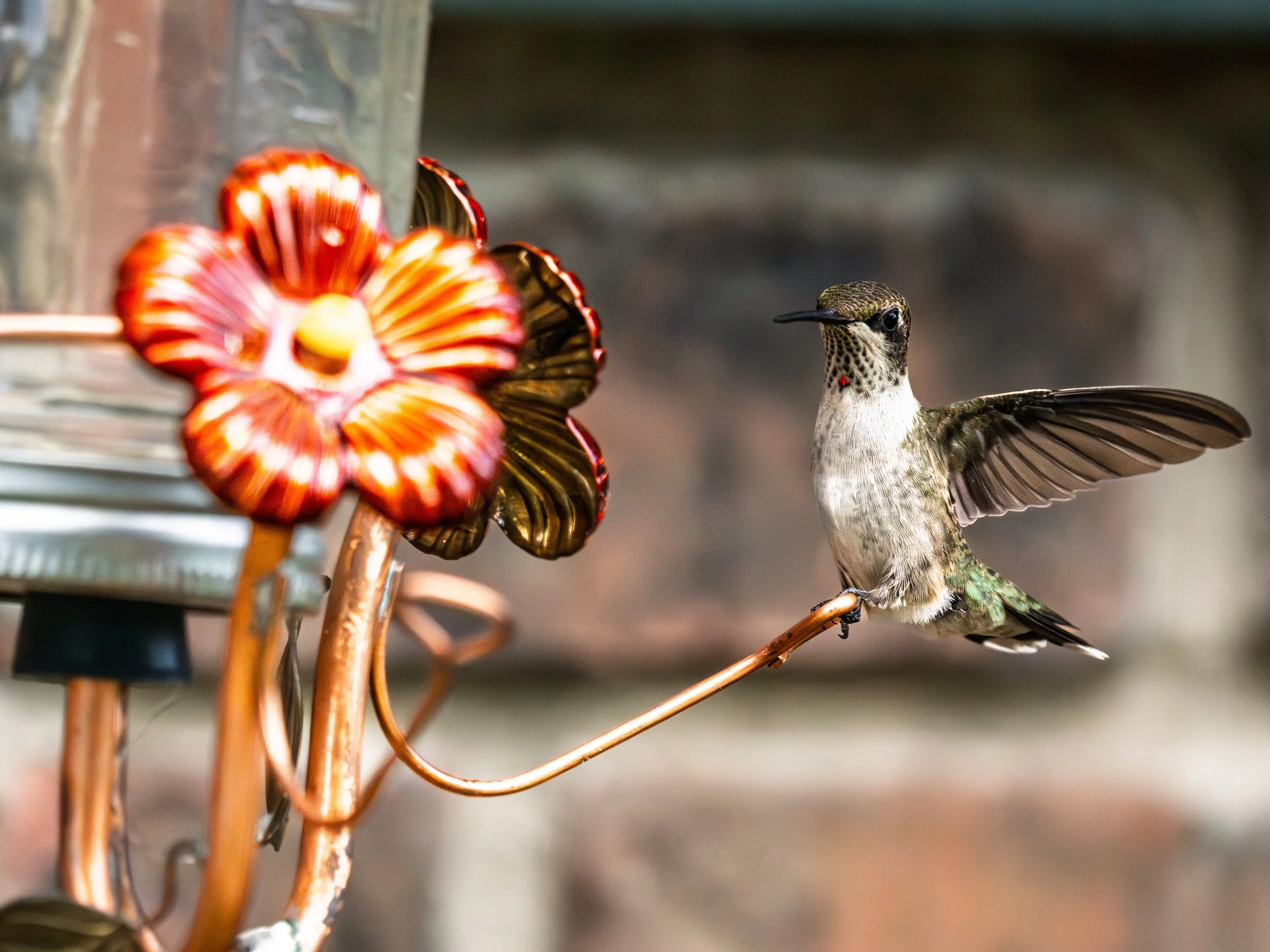Hum that Tune
Behind the camera.
Hey y’all, come on in. Gathering around and get comfortable. Do you want a drink? Fix something, but don’t be long. I want to tell a story.
Each spring an amazing thing happens. The smallest of birds leave their homes in southern Mexico. Flapping their wings at more than sixty times per second, they set a course north. They cross the United States and fly to Canada and Alaska. Their annual trek covers more than 3,000 miles. They can fly 500 miles nonstop across the gulf during spring and fall migrations. Some stick to the coast and travel the longer route along the edge of Texas.
Hummingbird’s wings create a humming sound that gives these birds their name, the “hummingbirds.” You have seen them, darting about, hovering and drinking nectar from flowers or maybe a feeder designed just for their long, thin beaks. These are the only birds that can fly backwards. A handy trick to move in and out of their favorite feeding spots.
Hummingbirds have a remarkable memory and often choose their favorite places to return year after year. Three years ago, I place a feeder in our front flower bed. Within minutes, two birds were hovering. They began drinking the homemade nectar that we brewed from sugar and water.
There are more than 350 species of hummingbirds, but the one in this photograph was a very young Ruby-throated hummingbird. Do you see the tiny red dot in the middle of his neck?
Each year, around May, we wait for our friends to return on their journey north. We try to make sure they have nectar to drink, to refuel as they prepare to continue their journey north. This little one has grown and his throat is fully developed with bejeweled red feathers. It’s always exciting to see them darting around in the air and hearing the hum of their wings.
Tell me where you have seen hummingbirds near you.
Geek speak.
Hummingbirds flap their wings so fast that it is challenging to freeze the action for a photograph. This guy was photographed with a Sony a6700 camera and a Sony 200-600mm lens. The focal length was 200mm and the shutter speed was 1/4000th of a second. The aperture was set a f/5.6, using an ISO of 1000. This blurred the background and captured the bird’s wings in flight. Modern editing programs have helped remove much of the noise associated with high ISO settings.
